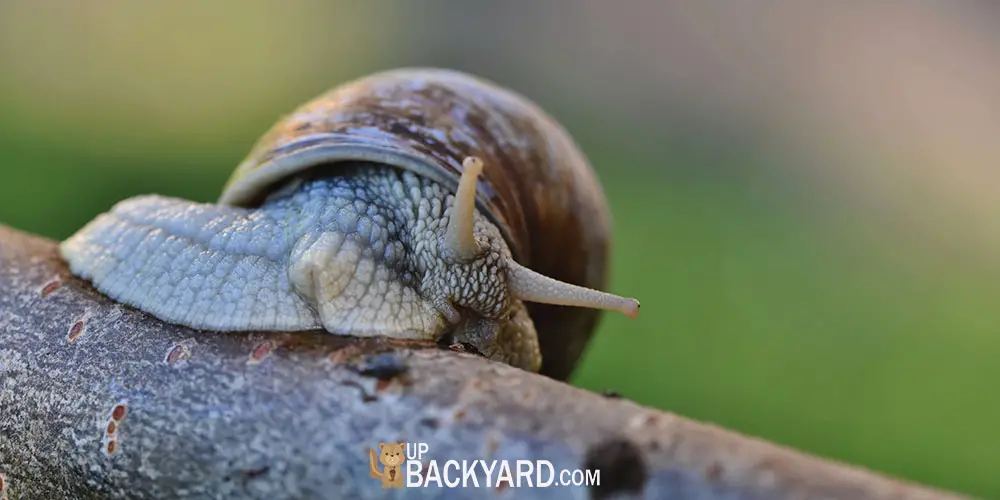If you have a lovely lawn or garden and you’re starting to see snails, you might be wondering if this is a good thing or a bad thing.
Should you panic if you see snails around your plants, or should you embrace them?
The truth is that deciding whether snails are good or bad depends entirely on the type of snail it is.
The common brown snails are bad for your plants because this is a food source for them, and they will eat as many of your plants as they can. Decollate snails, on the other hand, will not.
How to Determine If Snails Are Good or Bad?
There are two types of snails that you can find in most common gardens. Let’s take a look at each of them.
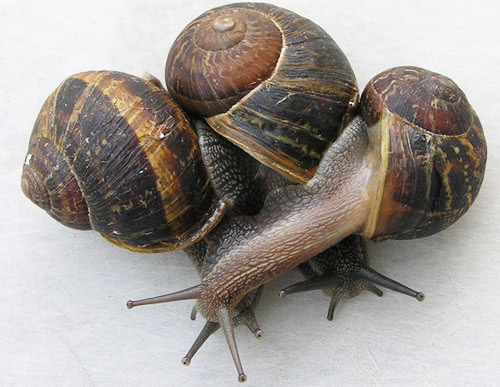
- Brown snails are the most common. They can be quite large but their shells are relatively small. While they do eat organic matter such as leaves, they also love eating through your plants. Plus, they can climb up those plants and even eat your fruits and vegetables.
- Decollate snails are smaller than brown snails but have larger shells. Not only will they eat your brown snails, but they will leave your plants alone because they are not interested in them. They will also eat slugs and other tiny pests in your garden.
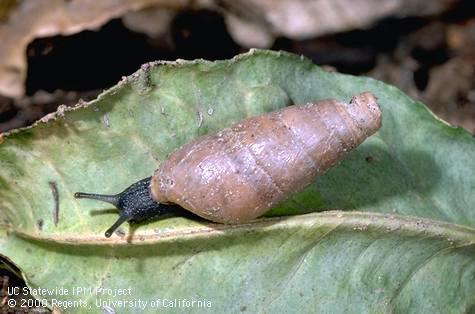
So, while seeing brown snails in your garden is not a good thing, many homeowners will deliberately place decollate snails there because these are the “good” snails.
Does this mean that placing a few decollate snails in your garden will get rid of all of your problems with snails? Not necessarily, but it is certainly a good start.
Before we go any further, you should also keep in mind that brown snails, in addition to being ravenous around your plants, can also carry certain diseases.
These diseases can be harmful to humans, so your first rule for removing brown snails out of the garden is to wear gloves and never touch the snails with your bare hands.
Diseases Carried by Snails in Your Garden
The most common disease carried by snails is called rat lungworm. It is found mostly in rats (hence the name) but can be spread to snails as soon as they eat the feces of certain rats.
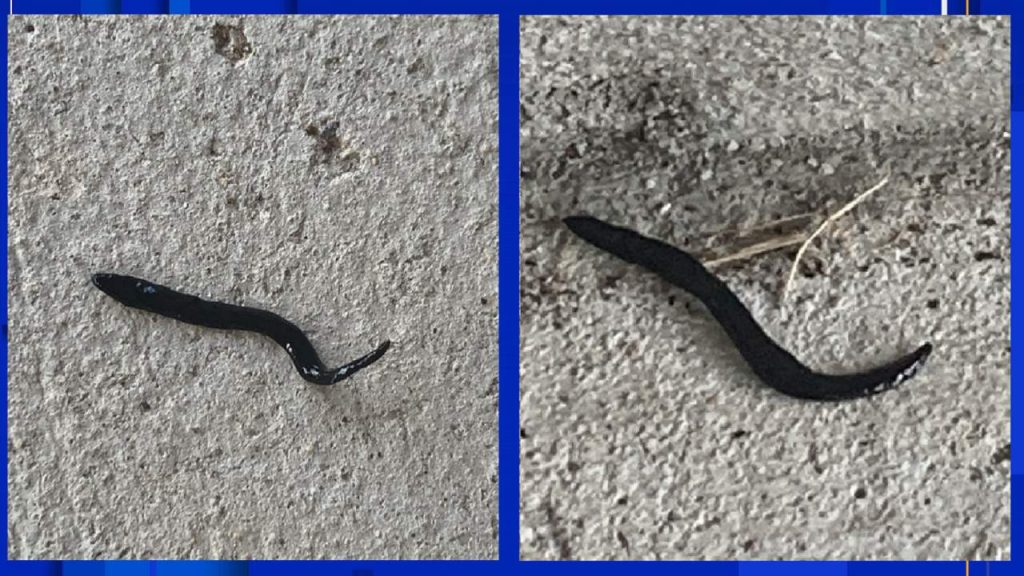
Rat lungworm can also develop when the slime left behind by the snails gets infected with the rats’ feces and is eaten by other snails.
The problem is that while rat lungworm is essentially harmless in rats and snails, it can be very dangerous to humans. This is because instead of being excreted through the feces, rat lungworm in humans goes to the brain. It can cause fluid buildup in the brain and even destruction of brain tissue.
The extent of the brain damage varies from person to person, but your body will fight the illness with a high fever. Since each person’s reaction to rat lungworm is different, it’s always best not to take a chance with this disease and simply take precautions so that you don’t get it in the first place.
But you don’t have to physically handle snails to get the disease. If the slime from snails, which is where the lungworm can be found, is left on fruits and vegetables in your garden and you don’t wash those foods, you can be contaminated yourself.
If you have puppies or kittens, they might experiment and accidentally ingest the slime of snails and rat lungworm can result. Dogs and cats normally ignore snails and slugs, but puppies and kittens may be curious enough to be exposed to them and might get the disease.
There are also two other possibilities when it comes to humans being harmed by snails and unwashed fruits and vegetables:
- Dicrocoelium, which is a tiny liver worm, is often found on ants. While rare, some people accidentally ingest tiny ants on their foods and may get this disease.
- Salmonella, which is a type of food poisoning, can also be the result of ingesting a food that has been exposed to the slime of snails and slugs.
All of these diseases are uncommon, and all you have to do to avoid rat lungworm is make sure that the fresh foods you eat from your garden are all washed thoroughly before putting them in your mouth.
Still, it is good to know these diseases exist so that you know to be careful when working in your garden.
Are There Benefits To Snails Being in Your Garden?
Some people may not be aware of this, but both brown snails and decollate snails excrete nitrogen and certain nutrients that go into the soil, which means the items you’re growing in that soil will be healthier and more vibrant.
The thing is, the disadvantages of having brown snails in your garden far outweigh the benefits they provide.
Decollate snails, on the other hand, will excrete these nutrients and the nitrogen but will also leave your plants alone, regardless of the types of plants found in your garden. They cannot climb and will also eat your brown snails and your slugs, so there are numerous benefits to having decollate snails in your garden.
All Types of Plants Are Affected
If you keep small plants indoors and you have no outdoor garden, don’t assume that brown snails won’t be a problem.
These pests only need a tiny hole to get from outside of your home to the inside, where they will easily find your plants. Remember that brown snails are great climbers.
If you notice a silver streak in the morning along with your floors, this is a sign that the snails and maybe even some slugs have gotten to the inside of your home.
Snails and slugs tend to do most of their eating at night while you’re asleep, and they hide in the soil of your plants until then so that you don’t see them.
Snails and slugs also love eating all types of plants, including fruits and vegetables, and plants that are there for decoration or because you like them.
Even if it’s inedible to us, this doesn’t mean that the brown snails and slugs won’t eat them. The truth is that snails and slugs eat sticks, twigs, leaves, and all types of plants.
How to Get Rid of Snails Around Your Plants?
When you’re trying to get rid of brown snails in your indoor or outdoor garden, the most effective course of action is usually an organic approach.
That being said, many people find that combining an organic approach with some over-the-counter chemical products works best in ridding their gardens of these pests.
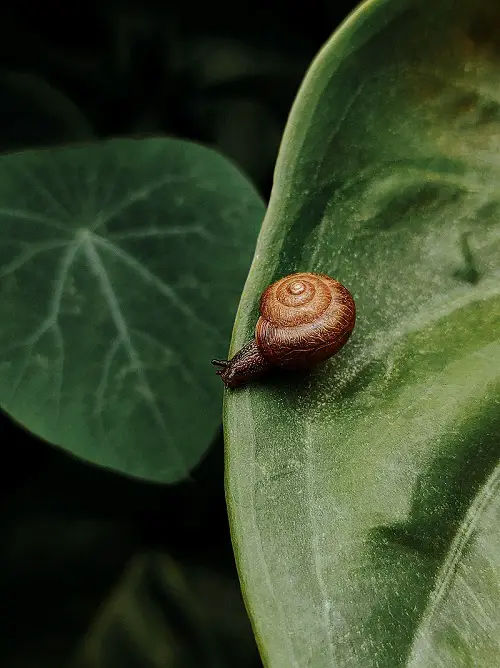
Here are a handful of ideas that can get rid of the brown snails that love to eat your plants:
- Provide a gritty pathway. Simply put, snails and slugs hate crawling over substances with a gritty texture. If you place crushed eggshells, sand, or diatomaceous earth around your plants, you’ll notice the snails staying away from them. Just make sure you don’t leave any gaps for them to go through because they will.
- Keep predators near your plants. This isn’t recommended for indoor plants, but if you keep natural predators in your outdoor garden, the snails and slugs will stay away. These include small garter snakes, frogs, toads, and even hedgehogs. Keep in mind that if you choose snakes, they might also eat any decollate snails found in the garden.
- Create barriers that stop snails and slugs. Snails and slugs hate salt, so you can put a solution of petroleum jelly and salt around the rims of your indoor plants, or cover the rims with copper tape. This tape oxidizes then releases salt. You can also make a barrier out of a snail killer that contains iron phosphate, if you don’t mind putting a few chemicals into your garden.
- Introduce decollate snails. Before you add decollate snails to your garden or plants, rid the area of all brown snails, which you’ll have to do after dark because they are nocturnal. Again, pick them up by hand while wearing gloves and remove as many of them as possible before you place the decollate snails there.
If you choose to use a chemical solution then add decollate snails, you’ll have to wait five to six weeks after the chemical is added and before the decollate snails are placed there.
It’s even a good idea to add just a few decollate snails at that point, then wait a few days to make sure they remain alive before you add others. This way, you’ll know for sure that the chemicals in the product are completely gone.
Final Thoughts
For the most part, snails are not good for your plants, especially the common brown snail. Decollate snails, on the other hand, will eat brown snails and slugs and get rid of them, but they might not eat every one of them.
Snails and slugs can cause certain diseases to develop in humans, but you can avoid this if you know how.
Always wear gloves when removing brown snails, and afterwards you can utilize one or more of the above methods so that your garden and indoor plants will be free of brown snails and slugs.
